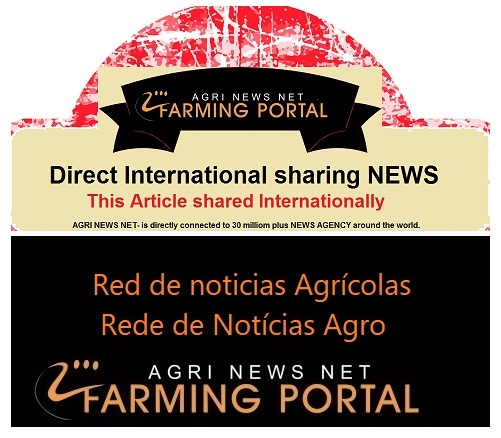World Farming Agriculture Commodity news - Weekly Updated - Exclusive and very popular - Delivering a Media service 365 days of the year.
What prospects does 2025 hold for Brazilian agribusiness? This report outlines the macroeconomic backdrop for 2025 and provides an outlook for each of Brazil’s major agribusiness sectors: soybeans, corn, cotton, beef, coffee, sugar and ethanol, orange juice, dairy, farm inputs, cellulose, poultry, and pork. Several common themes emerge for 2025, including the lasting impact of 2024’s very dry weather and potential shifts in prices, margins, and competitiveness in the wake of 2024’s currency devaluation. Other key subjects include tariffs and other measures that may impact trade as well as the effects of projected inflation, rising interest rates, and slower economic growth on local consumption. Despite the challenges, we expect new production and export records to be set. Excellent crop conditions for soybeans should see a new production record of 167m metric tons achieved in 2025, while both poultry and pork exports are expected to reach new highs in 2025. And favorable climatic conditions could see Brazil achieve the No. 1 spot in cotton exports for a second successive year.
The International Grains Council (IGC) cut its forecast for 2024-25 global corn production, largely reflecting a downward revision for the U.S. crop. IGC forecasts global corn production at 1.219 billion tons, down 6 MMT from its prior forecast and 12 MMT below year-ago. IGC kept its 2024-25 world wheat crop estimate at 796 MMT, with a downward revision for Russia offset by an upward adjustment to the Australian crop. For 2025-26, IGC initially projects production will rise to a record 805 MMT. IGC raised its 2024-25 global soybean production forecast 1 MMT to 420 MMT, now up 24 MMT from last year.
New Zealand, Australian and U.S. dairy groups have accused Canada of underpricing its milk products and dumping them on global markets. These groups claim Canada’s milk pricing mechanisms incentivize surplus disposal at artificially low prices, undermining international markets. New Zealand has initiated trade negotiations with Canada under the Comprehensive and Progressive Agreement for Trans-Pacific Partnership, while all three nations urge their governments to hold Canada accountable for its trade practices under World Trade Organization and regional agreements. Global milk production is expected to rise in 2025, intensifying competition and trade disputes, with Canadian policies drawing sharp criticism from rivals who advocate for coordinated international action.

A recent study for the Iowa Pork Producers Association highlights the pivotal role of Iowa’s pork industry in the state’s economy. As the nation’s top pork producer, Iowa contributes 33% of the U.S. hog inventory and supports over 120,000 jobs. In 2024 alone, the pork sector added $15.4 billion in economic value to Iowa, generating $8 billion in household income and $40.5 billion in total sales. The study was conducted by Decision Innovation Solutions (DIS) in 2024. Beyond economic benefits, Iowa’s pork industry emphasizes sustainability. Hog manure enriches soil, reducing reliance on synthetic fertilizers, while the use of local feedstuffs bolsters efficiency. Iowa pig farms exemplify a self-sustaining agricultural model that supports local communities and strengthens the U.S. food supply chain.
 World Farming Agriculture and Commodity news - Short update -13 January 2025
World Farming Agriculture and Commodity news - Short update -13 January 2025
Germany has not identified any new cases of FMD, Agriculture Minister Cem Oezdemir announced, following the confirmation of the first case since 1988 in a herd of water buffalo near Berlin. Efforts are focused on controlling the outbreak, while Germany collaborates with European Union (EU) partners to maintain export markets for unaffected regions. Non-EU countries such as the U.S., Mexico, South Korea, and the UK have suspended imports of German livestock and related products as the investigation into the outbreak's origin continues.
— USDA implements import restrictions on German Animal Products in response to FMD outbreak. USDA took swift action in response to Germany's recent foot-and-mouth disease (FMD) outbreak, implementing significant import restrictions on livestock and animal products from the country.
- Livestock ban: USDA's Animal and Plant Health Inspection Service (APHIS) has prohibited the import of German cattle, sheep, swine, and goats.
- Horse import procedures: Additional measures for horses, including pre- and post-import decontamination, have been put in place.
- Processed products: Processed pork and ruminant products arriving via cargo now require either an APHIS Veterinary Services import permit or certification of treatment meeting APHIS standards.
- Unprocessed products: Imports of unprocessed animal products from Germany are now banned, with limited exceptions.
The restrictions come in the wake of Germany's first FMD case in nearly 40 years, detected in a water buffalo herd near Berlin. This outbreak has significant implications for Germany's agricultural sector and international trade.
These measures are likely to disrupt Germany's meat and dairy exports, particularly those destined for markets outside the European Union. The loss of Germany's FMD-free status under World Organization for Animal Health guidelines has already led to export challenges, with countries like South Korea imposing immediate bans on German pork imports.
USDA's actions align with standard protocols for protecting domestic livestock from potential FMD introduction, highlighting the serious economic and agricultural risks associated with the disease.
— Germany faces export disruptions due to foot-and-mouth disease outbreak. Germany’s recent foot-and-mouth disease (FMD) outbreak has disrupted its exports. South Korea, its second-largest non-EU market after the UK, has suspended German pork imports, including 360 metric tons awaiting quarantine inspection. This decision follows Korea's prior resumption of German pork imports under a regionalization agreement addressing African Swine Fever, but presently Korea does not recognize EU regionalization for FMD. Last year Korea imported about 40,000 mt of pork from Germany, representing 7% of the imported pork market. Frozen pork belly made up the vast majority of these imports. Korea has recognized Brazil’s state of Santa Catarina as FMD-free without vaccination, allowing pork imports from that state. But it took many years to reach that agreement, and access is limited to a single Brazilian state.
According to the USMEF, globally, Germany exported 1.277 million metric tons of pork in 2024 (up 18% year-over-year), with 83% to the EU, 6.5% to the UK, and 3.6% to Korea. FMD clauses in export certificates have effectively halted German pork exports to third countries, including key markets like the UK, which imported 79,400 metric tons through October.
Germany remains the EU’s second-largest pork producer, with production reaching 3.553 million metric tons (up 2% YoY). While the EU allows regionalized movement within its borders, third-country export recovery hinges on regaining FMD-free status.
The U.S. imports minimal volumes of pork from Germany, totaling 238 mt through November and consisting only of prepared pork products.
Upshot: Efforts are underway to mitigate the outbreak's effects, including targeted vaccine development to control the pathogen's spread. German authorities are working to support the agricultural sector and prevent further disruptions. This underscores the need for regionalization agreements that would negate the ability to ban from a whole country.
Farmingportal and Agri News Net is connected to 35 Media companies around the world.

















